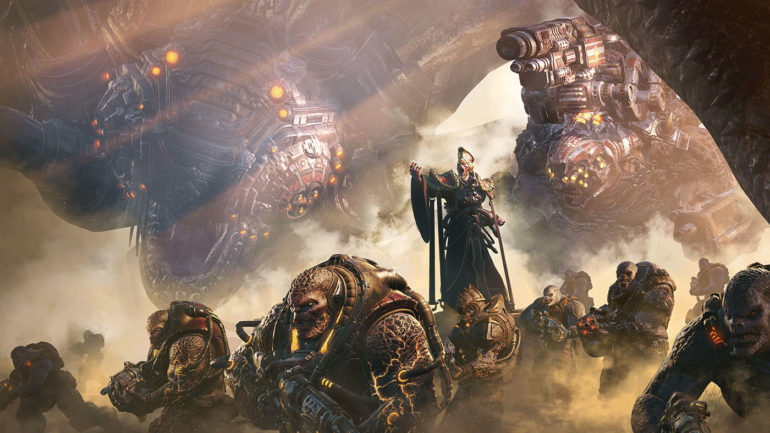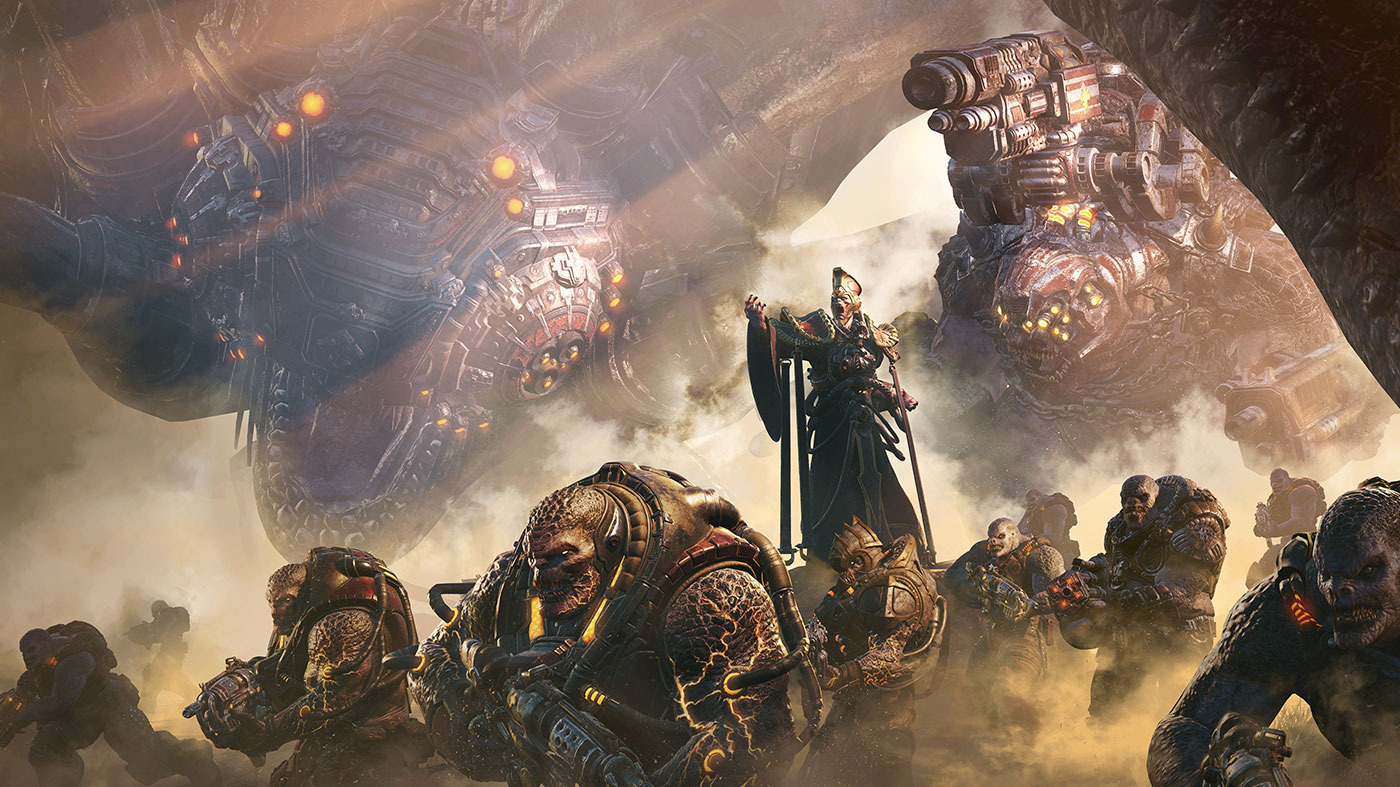Gears Tactics, given the roots of the franchise as a cover shooter, feels like it was low-hanging fruit all along. While steering clear of certain genre staples, it carved out a short, sweet helping of ballistic strategy all the while implementing several core concepts that have made Gears what it is today.
As a spin-off, I feel it succeeds in capturing the spirit and tone of its source material in ways that Halo Wars couldn’t.
MORE XBOX SERIES X LAUNCH COVERAGE:
- Xbox Series X Review
- Xbox Series S Review
- Gears Tactics Xbox Series X Review
- Gears 5 Xbox Series X Review
- The Touryst Xbox Series X Review
It, of course, borrowed elements from distant cousins within the genre, though it did enough to separate itself from the herd—including not restricting character movement to a grid. Ultimately, we found the game to be a little content light, while systems within the game actively discourage messing with team composition. (Although that latter point is true of the genre at large, I feel.)
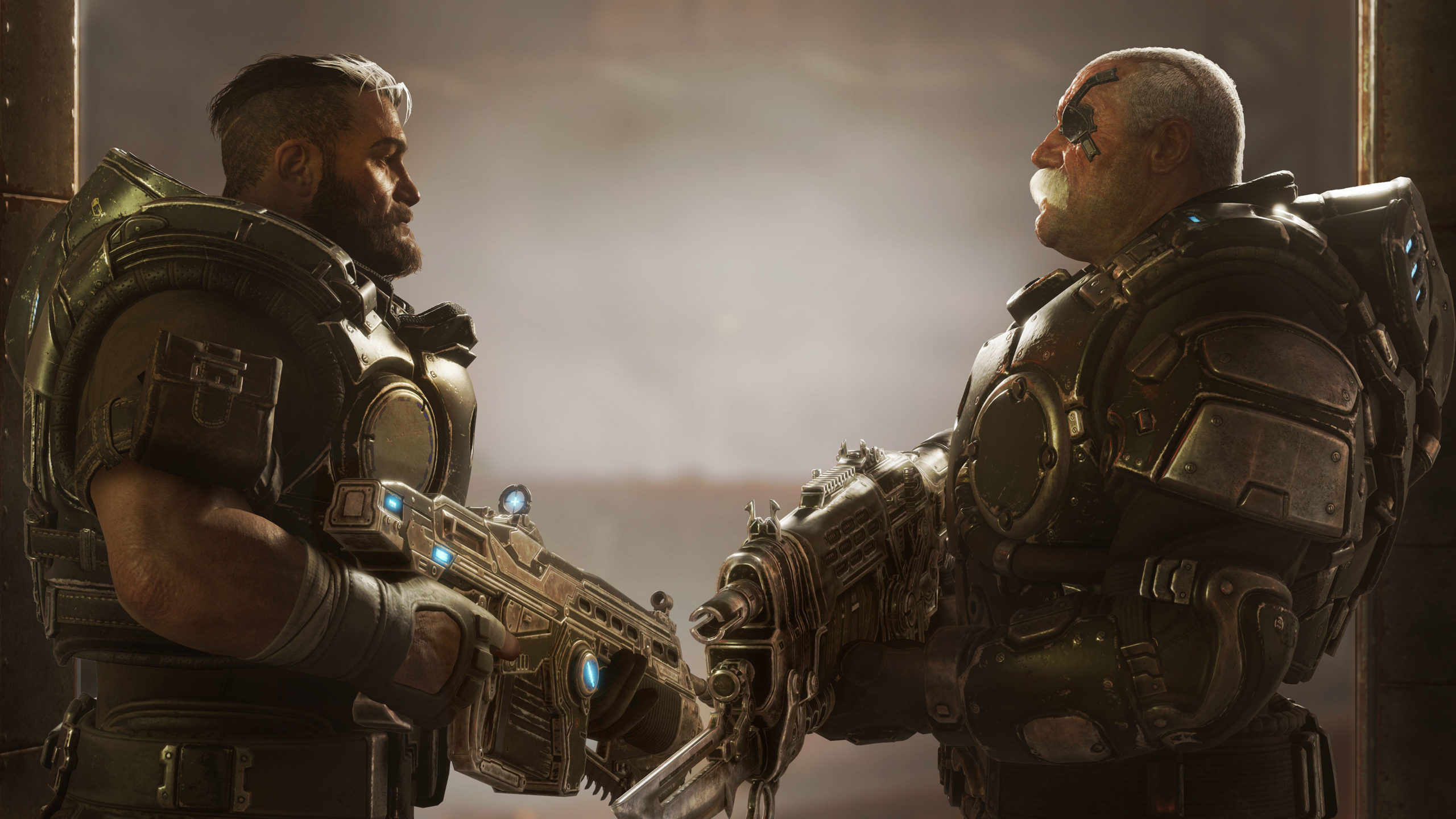
Though it was built with a keyboard and mouse in mind initially, the leap to controller shouldn’t seem inconceivable—it launched with controller support on PC, after all. For those coming from a mouse and keyboard, however, it might feel somewhat clumsy at first, I know I was forever mistakenly cycling through characters when I meant to be sifting through abilities and vice versa, but once you familiarise yourself with the mapping it does feel like second nature.
Clearly, a lot of effort has gone into making sure the translation to the controller is as seamless as possible, and the one thing that is generally lacking when games like this make the move to console is the confidence that only a mouse can provide. A feature that the developer has implemented since launch is a “precision toggle” which slows the cursor down so that more accurate selections can be made. For those not prepared to make the leap, the game supports keyboard and mouse for Series X—a nice gesture that could easily have been overlooked.
Like Gears 5, Gears Tactics is also receiving a major update to coincide with its arrival on consoles.
It didn’t even occur to me the first time I played Tactics that Jack, of all characters, would make the most sense to implement. Fortunately, this update injects the companion bot into the fray and brings with him a range of skills that does dramatically change the feel of each encounter. It’s literally like having an extra player on the field—although he’s a support bot and is, therefore, inoffensive—and I did find that I handled situations so much easier than I did on my first pass through. Whether that’s the Jack effect or simply knowing the game, I can’t say for sure. It feels entirely different with him in tow.
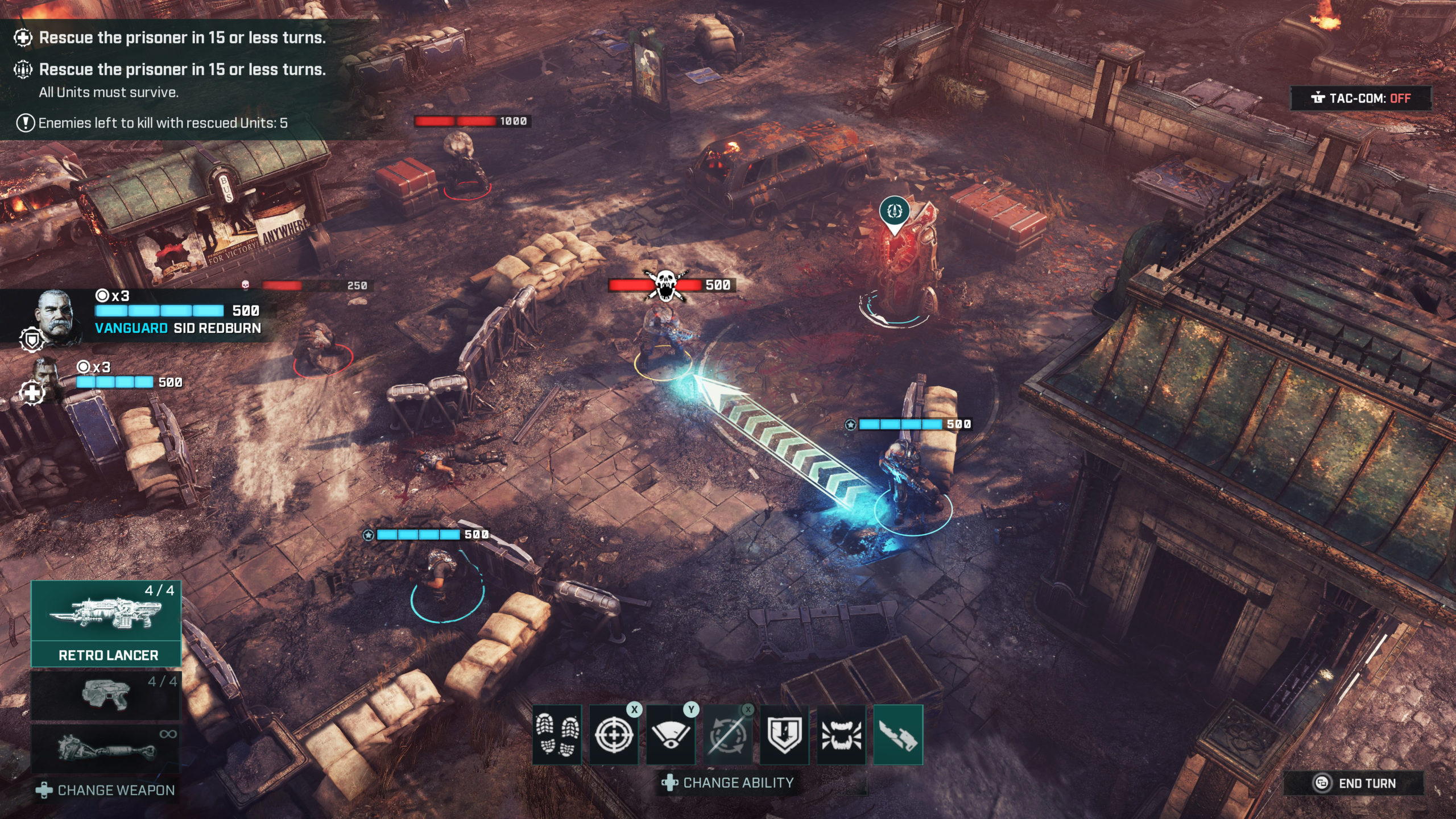
Any comfort you get from Jack’s company is soon undone as the Locust bring a few new tricks of their own, including Deviant-grade enemies. By emitting a buff to all of their surrounding bugs, these stronger foes do well to challenge strategies and tactics you might find easy and comfortable, they force you to get aggressive and think outside of the box at times.
Gears Tactics also runs beautifully on Xbox Series X. For a game that was built for PC, it feels as though it is best optimised for this new machine, with a steady frame rate, mouthwatering 4K textures, and fast load times that keep you out of the action no longer than you need to be.
THIS GAME WAS TESTED ON AN XBOX SERIES X FOR THE PURPOSE OF THIS REVIEW. A DIGITAL REVIEW CODE WAS PROVIDED BY THE PUBLISHER.
Original Review
Gears Tactics is a decent little turn-based tactics game that had the misfortune to be released around the same time as an entry from the genre juggernaut that is XCOM. If it had a chance to stand on its own then it might have shined a little brighter. Gears Tactics doesn’t have issues of poor gameplay or technical hindrances, suffering instead from some shortcomings in the design that holds it back from being truly great. Despite these setbacks, Gears Tactics still has some engaging gameplay and provides a strong foundation that could easily be built on in the future. There’s a lot to enjoy for both fans of the franchise and fans of turn-based tactics titles, just don’t think too hard about what could have been instead of what is.
Set twelve years before the first Gears of War, Gears Tactics doesn’t stray too far from the established narrative formula. Like any capable and successful soldier in the COG, Gabe Diaz is a Motor Pool sergeant wasting his potential because he got burned by his command and that’s just how the COG rolls. Gabe gets tapped by Chairman Prescott, the guy who wrung out Gabe’s enthusiasm for life, ordering him back into the meat grinder to raise an army and hunt down a high-profile Locust.
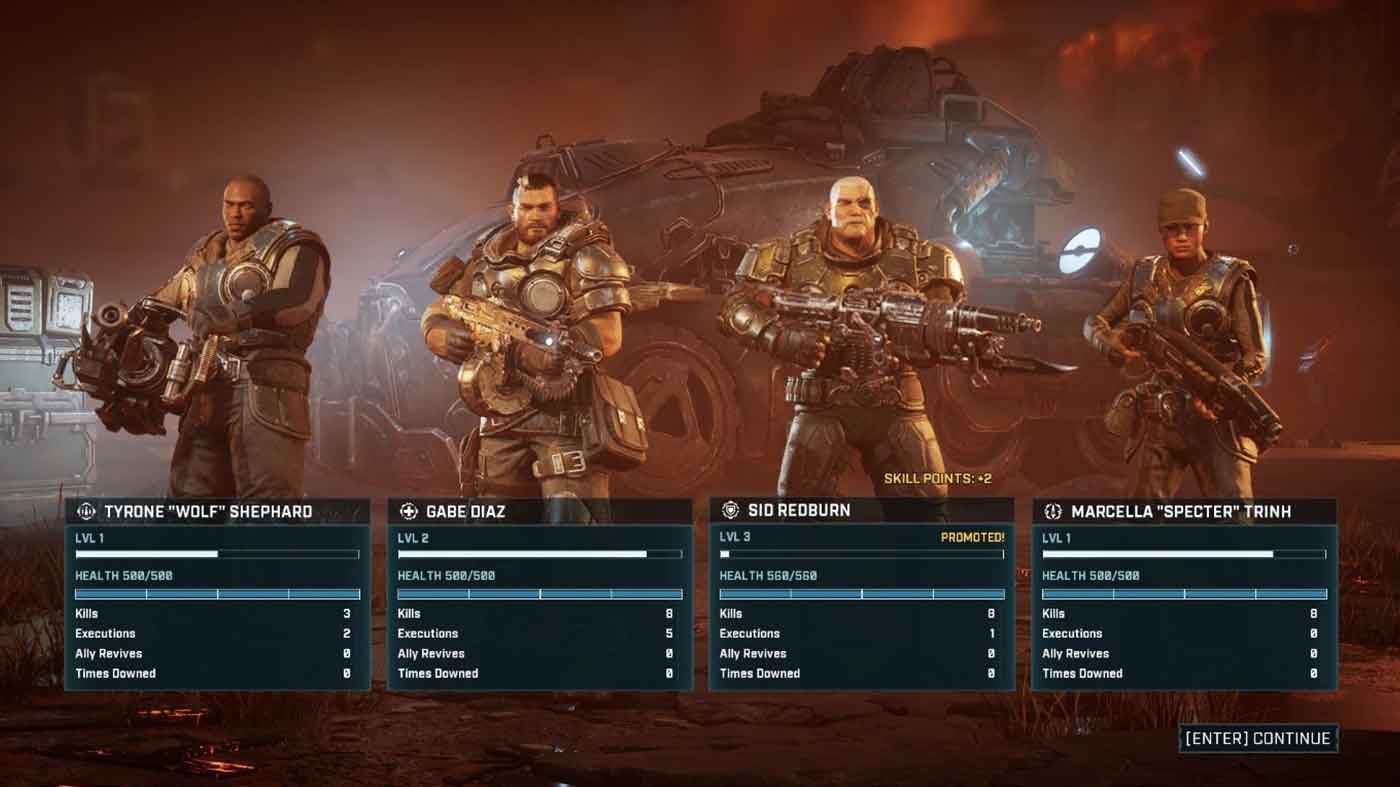
You’re a fan of Gears of War in general then you can probably already guess how this will play out. It does touch on some significant pieces of lore, however, which may be of interest to those who crave extra details. It isn’t on the same scale as the main series but it manages to hit the same beats all the same.
Gears Tactics doesn’t want players to get bogged down in base and soldier management, eschewing the former completely and streamlining the latter where possible. Attachments for gear are expected to be shared and passed around between units, and ample opportunity is given to re-spec abilities when needed. Along with no base building, there’s also no side economy present in the game to provide additional ways of improving, upgrading, or equipping your units. Instead, most of the campaign missions do something to push the story forward rather than being “filler,” keeping the player largely focused on the narrative instead. The overall experience is quite short, as a result, not giving the player much time to really enjoy their characters’ growth before the game throws the next challenge at them. This makes the few side missions that are present frustrating to play at times, since they do nothing for story progression and usually only have as much loot and XP on offer as the main story missions.
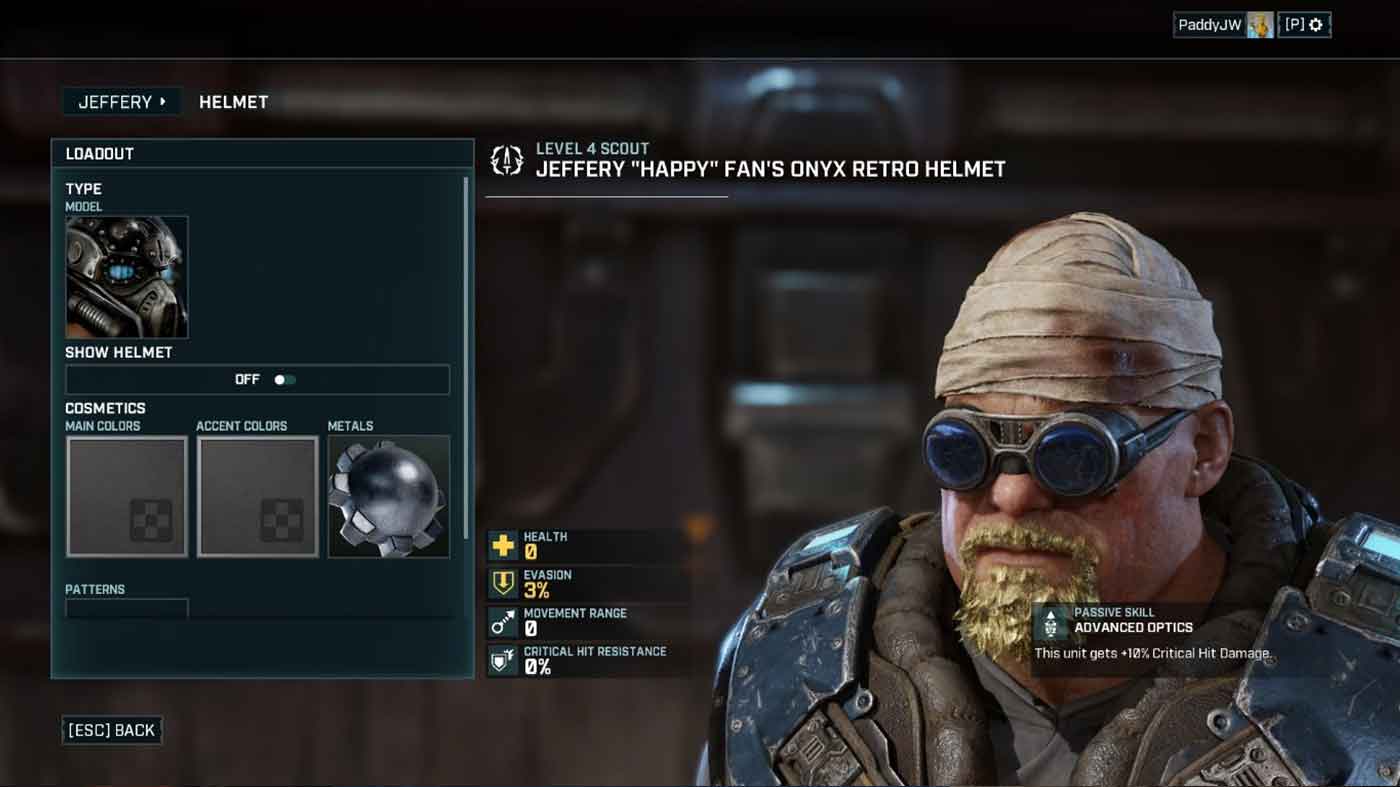
The other side of this is that because very little distracts the player from the game’s main focus, it still manages to come across as a tight package. There are only around four mission types that get used, with the variety coming largely from how the narrative is centred around each one. The short campaign means that players don’t get bogged down in repetitive missions that feel like they go nowhere without a side economy to justify them. Considering that the narrative isn’t especially deep, short, and sweet is probably for the best.
The biggest problem with the campaign being so short is that the majority of your units will be redundant. At most, you’ll have A, B and C teams, with a bunch of extra soldiers just hanging around. The majority of those three teams will likely consist of your Hero characters, as well – the properly named ones wearing plot armour – as they’re required in more missions than they’re not. They also can’t die under your control, the game literally prohibits it, forcing a restart of the mission or from the last checkpoint if they do, so it isn’t an option to not keep them levelled high. It’s also at odds with the general spirit of the level of customization it provides for your units. The game gives you the ability to create an army of lovingly crafted soldiers and then forces you to mostly use the ones it says are important.
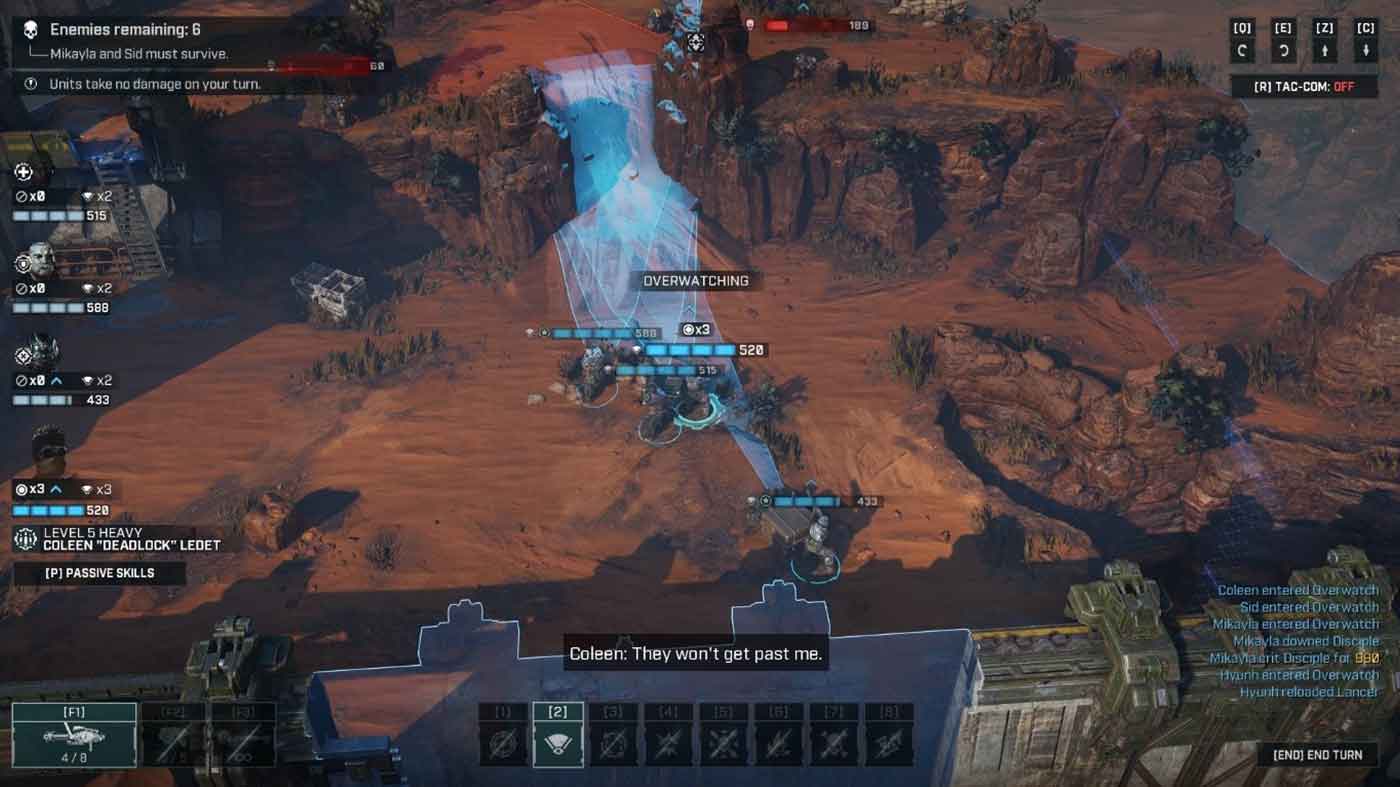
Given the difficulty of Gears Tactics, even on Normal mode, you won’t want to spread the experience around either, keeping things to a small group of curated units. The game simply doesn’t last long enough or present enough opportunities to properly raise your army any other way. The extra, useless soldiers are less of a problem on higher difficulties where losing soldiers isn’t a possibility but a certainty. That said, having to drop back to lower levelled soldiers on a higher difficulty level is also a slog, the kind of slog that feels like running headlong into a brick wall in the hopes of breaking through. Your hits land less often than those of the enemies’, for less damage, and it can feel as though no amount of tactical thinking can save you. You may as well be playing on Iron Man mode, at that point.
This is where the lack of some kind of side system that links back to the main gameplay matters the most, as it could have buoyed the weakest parts of Tactics’ design. Sure, you can acquire gear attachments in missions from loot crates (not the kind you pay for) or by completing side objectives. However, attachments that are actually useful can come at a trickle and rely almost entirely on chance. You’ll end up with a lot of trash by the end that you can’t do anything with but throw it away. If resource gathering was instead formed into a system that players had more influence over, it would make fielding replacement soldiers easier and more feasible.
None of these problems should be taken to mean that the game isn’t worth checking out, as its tactical gameplay is still highly enjoyable. Instead of everything being on a grid, movement and positioning is fairly free, which allows for much more flexibility in tactical placement. The enemy AI is good at keeping the pressure on while keeping its responses proportionate, adjusting what it throws at you based on how you’re doing rather than outright relying on scripted sequences. Each class has four different subclasses, and the synergy you can create between subclasses of different characters leads to some awesome combat situations.
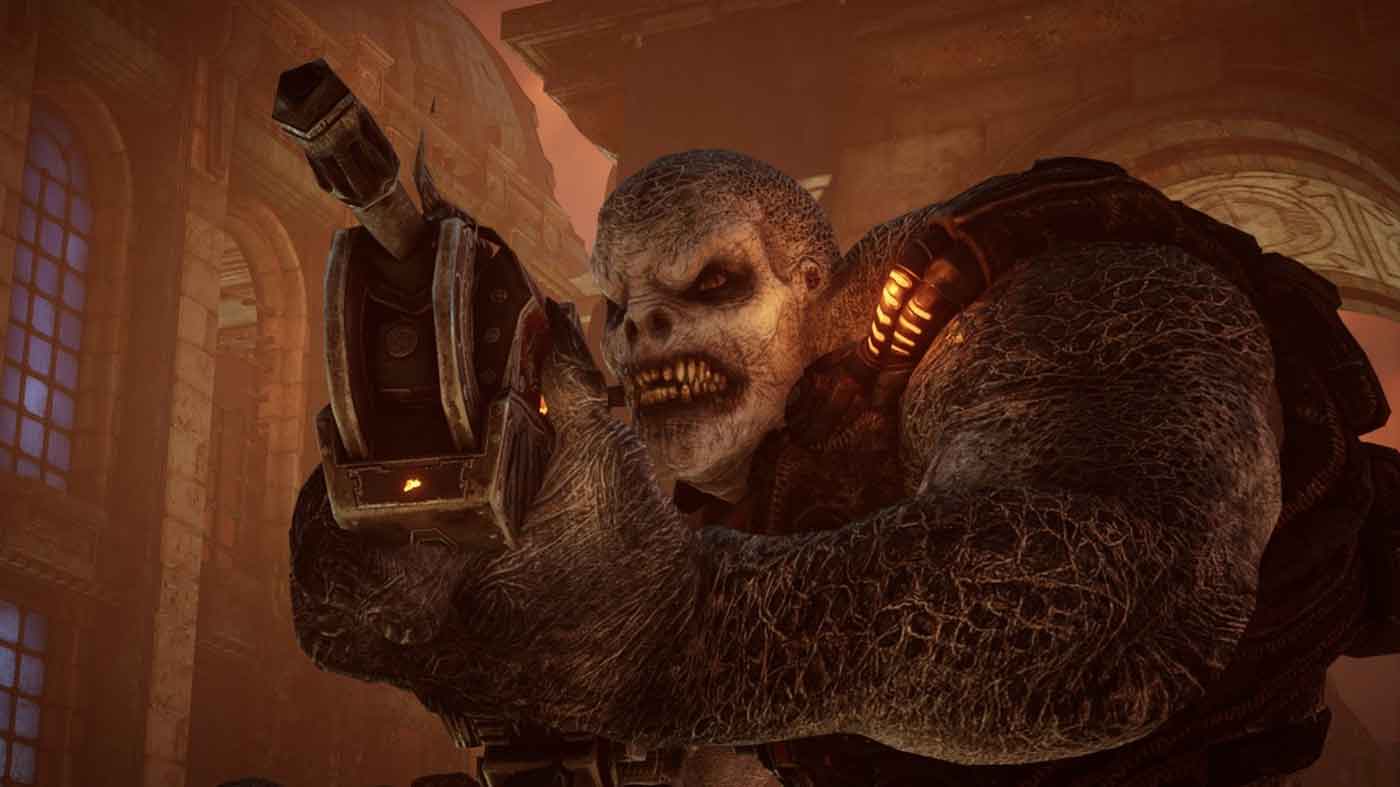
There’s a satisfying amount of Gears of War gameplay that’s been translated into Tactics. Locust will still come out of Emergence Holes, which you can ‘nade to stem the flow of enemy reinforcements. They also come in waves of frighteningly high numbers compared to what you have, while your squad is equally ridiculous in how much firepower they can put out to deal with it. Though there are only two right now in the game that can be used (assuming there’s no future content for the game), characters can also pick up dropped Locust heavy weaponry. Even the characters are suitably foul-mouthed, and the violence excessively over the top, as is the Gears way. The only criticism I can level here is that they didn’t go far enough with adapting Gears mechanics for a strategy game like this. Active reloading and even access to mega weapons like the Hammer of Dawn would have been excellent additions.
Gears Tactics was probably never going to be a massive ground-breaker. It’s more of a toe-dip into the genre as opposed to a plunge. As far as first forays go though, this isn’t a bad first effort. It’s technically sound, the worst glitch I experienced being the occasional brief delay between an AI starting its turn and actually doing anything. It’s also on-point visually, with environments that look as though they’ve pulled straight from the main series’ locales. Gears Tactics is strongest in those moments, both gameplay-wise and visually when it echoes the familiar from Gears’ past entries. If there’s another title in the series’ future though, and I hope there is, it should definitely embrace the existing world-building of the franchise rather than trying to forge anything new.


